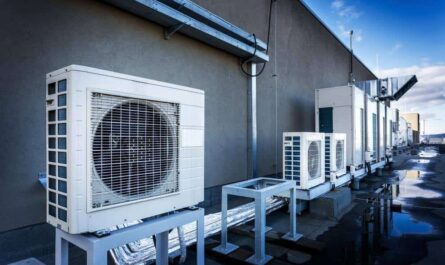
Introduction to IoT
The Internet of Things, commonly called IoT, refers to the ever-growing network of physical objects that feature an Internet connection and software, sensors and actuators. These ‘things’ can collect and share data across existing infrastructure which is fueling new business models and improving quality of life. While it may seem recent, the concept of connecting everyday physical objects to the digital world has been developing gradually for decades. What started as connecting basic devices like thermostats and appliances is now extending to almost any physical item from automobiles and manufacturing equipment to fitness trackers and smart home devices.
Growth of Connected Devices
Analyst firms estimate there are currently over 20 billion connected devices worldwide and that number is forecast to explode to over 75 billion by 2025. As costs decrease and performance increases, ever more mundane objects from clothespins to lightbulbs are gaining the ability to connect and interact digitally. The growth is being driven by declining costs of connectivity technologies like WiFi, Bluetooth, and soon 5G networks. Meanwhile, demand is rising as businesses and consumers alike seek ways to improve operations, streamline processes, and enhance experiences. Everything from detecting problems on assembly lines to remotely monitoring elderly family members will be supported by billions more smart sensors and devices networked globally.
Enabling Infrastructure
Behind all these connected endpoints lies the necessary infrastructure comprising networks, cloud platforms, and analytics. The network backbones require continuous upgrades to handle increasing data volumes while maintaining reliability and latency for mission critical IoT applications. Edge and fog computing are also gaining traction to better support applications requiring local/real-time processing like industrial automation. Meanwhile cloud platforms provide scalable storage and computing to crunch the massive amounts of sensor data. Together this enabling infrastructure is allowing IoT solutions to scale far beyond initial pilots and proof-of-concepts.
Enhanced Experiences Through IoT Devices
By linking the digital and physical worlds, IoT is enabling completely new experiences and transforming existing ones. Take for instance how smart home systems are improving convenience, security and energy efficiency for households. Centralized control of locks, lights, thermostats, alarms and more from a mobile app allows remote monitoring and optimization of the home environment. Similarly, wearables and connected fitness equipment are revolutionizing the health and wellness industries by providing quantified-self data and coaching to improve lifestyles. Other areas like smart cities, autonomous vehicles, and augmented reality are also being enriched through connectivity of infrastructure, vehicles, devices and digital overlays.
Business Optimization With IoT
On the commercial and industrial side, IoT brings similar benefits through connectivity of products, assets and work processes. Asset tracking allows precise remote monitoring of equipment utilization, fuel consumption, malfunctions and more to optimize operations. Connected ERP, SCM and M2M/IoT platforms help digitize formerly paper-based workflows to streamline production, sourcing, logistics and customer service. The result is improved productivity, yield, asset performance, and overall efficiency for organizations across many verticals. Likewise, predictive maintenance based on real-time sensor data helps avoid unplanned downtime through proactive repairs and servicing.
Data Analytics Advances
All the data flowing from billions of endpoints also enables the next generation of IoT analytics from basic monitoring to predictive and prescriptive insights. Combining sensor readings with contextual data using techniques like machine learning, AI and statistical modeling provides a comprehensive view of operations. This in turn supports applications like predictive quality control, predictive maintenance, demand forecasting, automated equipment adjustments and more. Advanced analytics also uncover new optimization opportunities that weren’t evident before. For instance, manufacturers can improve production processes by analyzing throughput, defect rates, energy consumption across different shifts and departments over time.
Privacy and Security Considerations
While IoT devices brings clear benefits, the massive connectivity of physical objects also poses security, privacy and reliability challenges if not implemented properly. As more ‘things’ go online, the attack surface expands dramatically presenting new entry points for malicious actors. Threats can range from DDoS attacks and ransomware to theft of sensitive operational or personal data. Ensuring robust identity and access management, encryption, update mechanisms and perimeter defenses will be critical as these networked devices become more business and mission critical. Manufacturers must also address vulnerabilities arising from lack of patching, hardcoded credentials or absence of basic security features in low-cost devices. Overall, balancing functionality, usability and security will require close developer-user collaboration as IoT continues to evolve.
Conclusion
In conclusion, the ongoing integration of physical objects, networks, edge/cloud platforms and analytics is transforming our world through real-time connectivity and data insights in both consumer and industrial domains. While the IoT ecosystem still faces maturity challenges, its impact on digitizing manual processes, optimizing asset performance and creating new user experiences will only continue multiplying over the coming years. Organizations that strategically invest in IoT solution deployments and analytics capabilities will gain competitive advantages through business innovation in both existing and emerging application areas.
*Note:
- Source: Coherent Market Insights, Public sources, Desk research
- We have leveraged AI tools to mine information and compile it


